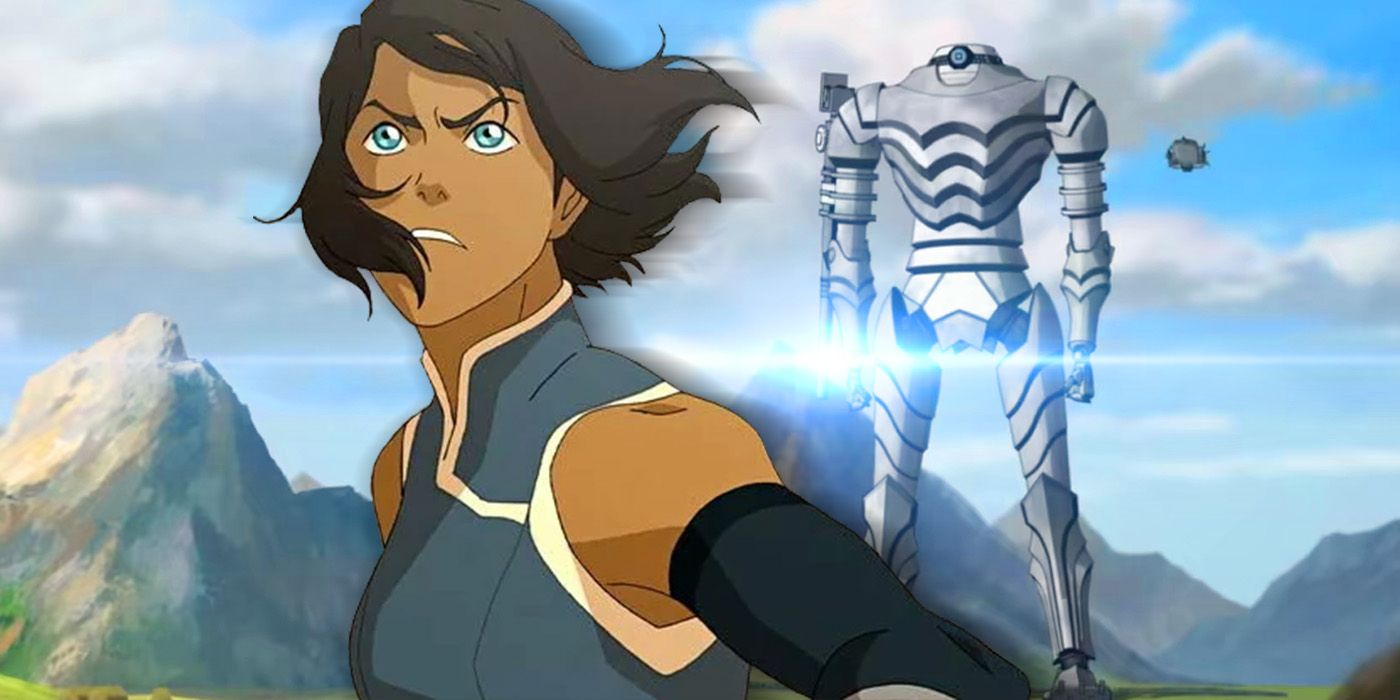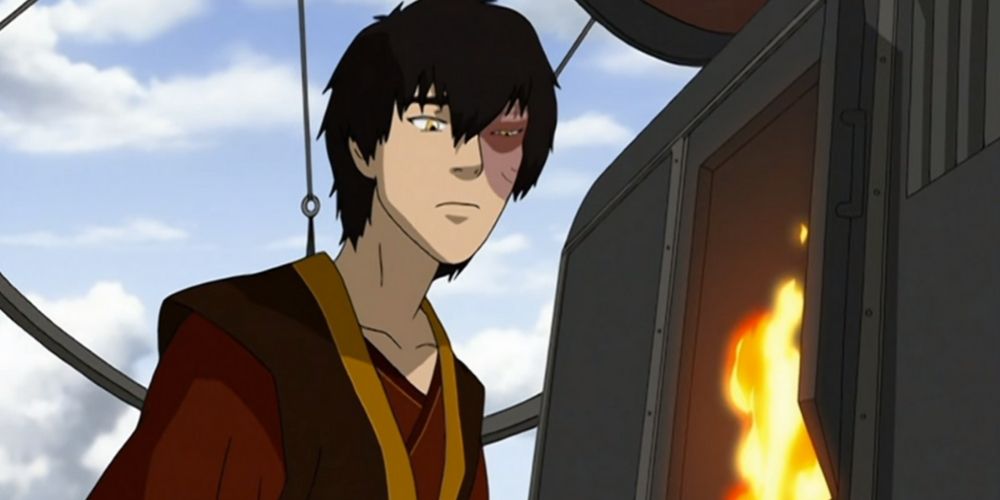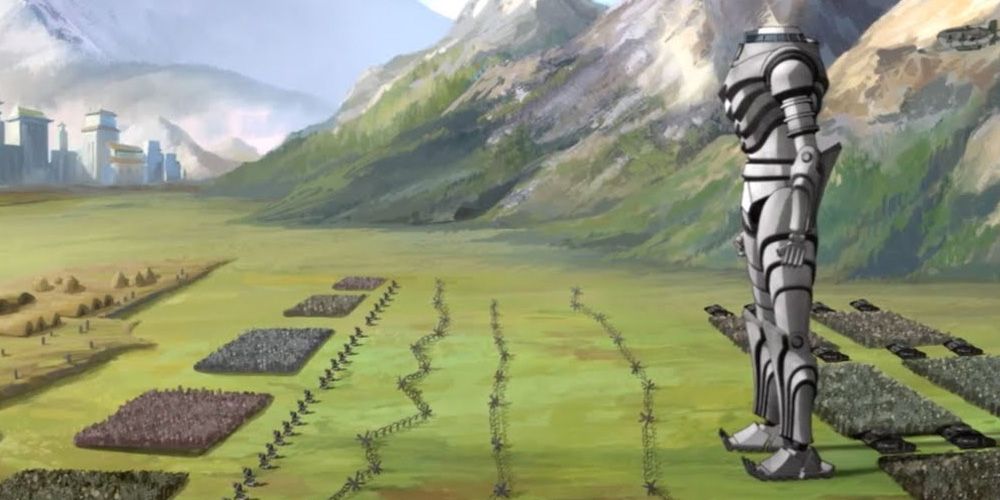The leap in time from Avatar: The Last Airbender to The Legend of Korra saw technology grow by leaps and bounds in the intervening decades. The start of the original series had coal-powered ships, while the end of the sequel show climaxed with a gargantuan mech threatening cities with an energy cannon on its arm. From a step back, this progression in technology may strain credibility, but when you get up close, it not only makes sense -- it shows how such scientific advancements are worldbuilding done right.
The first crucial step to understanding the tech progression in Avatar is to remember that the first series began on the tail end of the Hundred Year War, a solid century of technological progress driven forward by the Fire Nation with the obsessive end of gaining as much advantage over the other nations as possible. Fire Lord Ozai's portrait in the Royal Gallery even integrated metal cogs and smokestacks to represent the era of industrialization that occurred under his crown.
Many of those innovations, when compared to the era seen in the Kyoshi novels, seemed to center on metallurgy and machine engineering. In typical firebending fashion, the fruits of steam and coal drove much of that innovation forward as firebenders looked for fuel to burn to power their massive ships and war machines. The environment was already ripe for a technological genius to come along, and the world of Avatar got two in the form of the Mechanist and Sokka.
The Mechanist developed solutions for timekeeping and logistical maneuvers and even designed the giant mechanized drill Azula used to piece through Ba Sing Se's defenses. The war was the main motivation for technological advancement at this time, and with Sokka's assistance, the Mechanist developed war balloons and waterbender-powered submarines. If war drove innovation, however, the end of war ushered in an era of unparalleled cooperation and prosperity that only further drove technological progress.
In the 70 years between the two series, the Fire Nation's technologies spread around to the rest of the world. Factories formed, the Southern Water Tribe rebuilt itself anew and the development of metalbending made granted unprecedented latitude when it came to manipulating metals valuable for new technologies. Perhaps more valuable than anything, however, was the secrets of lightning bending.
Exclusively used by Fire Nation royals in the era of Aang, the democratization of lightning bending sprouted whole factories made to harvest the valuable energy from firebenders willing to punch in for a day's work. This sparked a revolution in energy that skyrocketed technological progress greater than coal and steam had nearly a century before. This contributed to Korra's steampunk aesthetic, but it also makes total sense from a scientific perspective.
Many of the problems halting technological progress aren't mechanical or even a matter of ideas, but rather the issue of packing efficient enough energy into a small enough space. Much like the Mechanist had a generation beforehand, Hiroshi Sato used the new wonders of electricity to create Satomobiles, biplanes, taser weapons and even mecha tanks! Varrick and Zhu Li took those advancements and ran with them.
Radio communication, electromagnets and increasingly streamlined armored suits were all possible under such fertile conditions. Varrick and Zhu Li brought forward yet another revolutionary energy source by harvesting the spirit vines from Republic City. This served as the basis to explain Kuvira's giant mech and arm cannon. This rapid technology progress unfolded organically, spurred on by condition rife to produce such results.
Part of the difficulty in understanding such a head-scratching progression of technology is that your instinct may be to compare the world of Avatar to the real world. From that perspective, it seems puzzling how a society enjoying their new Model T cars might have flying hummingbird suits just a few years later. But the challenges inspiring scientific growth and the advantages of pushing it forward are far different in a fantasy setting like Avatar than it is in the real world. Don't try to cram one into the context of the other, but instead celebrate in the fact that fantasy isn't reality. After all, that's the point of fantasy.
Whereas the real world needed exhausting portions of physical labor or vast amounts of mechanical aid to build our greatest accomplishments, a world with benders accomplishes all of that far more easily. You don't need a crane or a bulldozer or an army of laborers -- you just need one earthbender. You don't need a welding rig or an artisan trained for years -- you just need a firebender or a metalbender. By that standard, Avatar's technology were to progress at the same pace as the real world's, it would, oddly enough, be less realistic.
Each piece of technological advancement from Airbender to Korra feels like a natural addition to the universe, and the evolution in technology constantly kept audiences' attention with new and unique designs.



